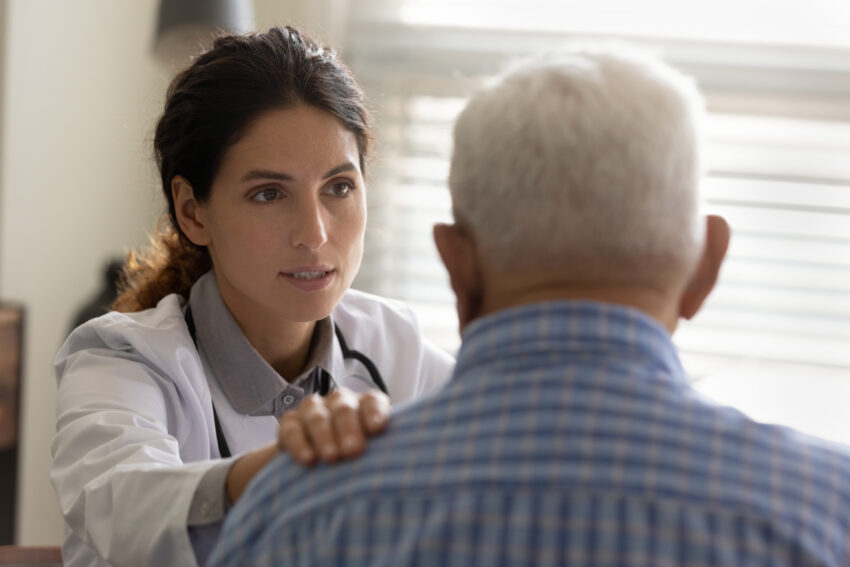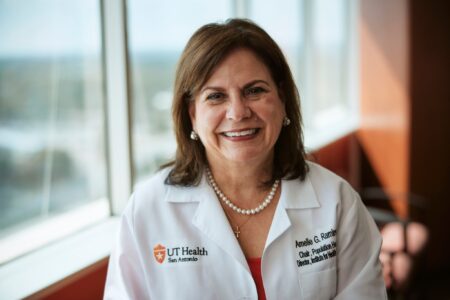
Share On Social!
From 2009 and 2019, cancer was the top cause of death in the US for Latinos.
Now, while new data show that cancer has become the second-leading cause of death in Latinos, only slightly behind heart disease, cancer remains a big threat to the health of the US population (19.5% Latino).
Every year, heart disease and cancer cause 17% of Latino deaths in the US, according to the American Cancer Society’s Cancer Facts & Figures for Hispanic/Latino People 2024-2026 report.
Let’s dive into the key highlights of the report.
Cancer Incidence
The American Cancer Society estimates 195,300 cancer cases would be diagnosed in Latinos in 2024 with another 50,400 Latino individuals dying from the disease.
Here are some key facts from the American Cancer Society report:
- Among the Latino men diagnosed with cancer, 25% were diagnosed with prostate cancer, 10% had colorectal, and 8% had kidney cancer.
- For Latinas, uterine corpus cancer comprised 9% of cases, 8% were colorectal, and 30% were breast cancer.
- Between 2012 and 2021, Latina breast cancer increased by 1.6% annually, compared to 1.1% annually in white women.
- When it comes to cervical cancer, Latinas had a 36% higher incidence rate than white women.
- Additionally, Latinas had about twice the incidence of stomach and liver cancers.
- Over the last decade, Latina uterine cancer deaths increased 2% to 3% every year, compared to 1% in white women.
In Latino children, leukemia is the dominant form of cancer, with high rates.
Reasons for High Cancer Rates
Much of the reason for high cancer rates in Latinos, as in many groups, are issues with the non-medical drivers of health (NMDoH).
In fact, our health is influenced by a variety of NMDoH, from economic stability to education to community context, forming the environment in which we are born, grow, live, work, and age.
Issues with NMDoH can create challenges to health.
Preventive cancer screening is one such challenge. In fact, there is a much lower prevalence of cancer screenings in some people of different backgrounds, including Latinos, according to the new American Cancer Society report.
Here are some examples of screening rates for certain cancers:
- cervical cancer: Latino individuals (69%), White individuals (80%)
- breast cancer: Latino individuals (60%), White individuals (65%)
- colorectal cancer: Latino individuals (52%), White individuals (61%)
Screening can detect cancer at earlier, more treatable stages.
Being diagnosed at a later stage greatly decreases your odds of survival as well as being more expensive and more aggressive to treat.
For instance, 60% of Latinas are diagnosed at an earlier stage of breast cancer compared with 68% of white women, according to the American Cancer Society report.
Accompanied by a higher likelihood of poverty and language barriers, this puts these populations at risk of poor health outcomes, such as diabetes, high blood pressure, and obesity — all of which put you at risk for cancer.
Cancer Risk Factors
There are many risk factors associated with cancer.
Risk factors for cancer include infectious agents, unhealthy diet, inherited genetic mutations, hormones, certain medical conditions, and tobacco use, according to the American Cancer Society report.
Tobacco use in general has a large impact.
Smoking continues to be a leading risk factor for cancer death (29%), heart disease, and other diseases.
Those who quit tobacco use can see their risk of heart disease cut in half within the first year of stopping and those who kick the habit before 40 will see a 90% decrease in the risk for premature death, according to a Salud America! report.
If you want to quit smoking, Quitxt is a bilingual service from UT Health San Antonio and the Cancer Prevention and Research Institute of Texas that sends texts messages to smartphones to help South Texas adults quit smoking. Messages from Quitxt help with motivation to quit, setting a quit date, handling stress, and using nicotine replacement, if needed.
To join Quitxt in English, text “iquit” to 844-332-2058.
For Spanish, text “lodejo” to 844-332-2058.
“There’s no better time than now to stop smoking with help from Quitxt,” said Dr. Amelie Ramirez, director of Quitxt and Salud America! at UT Health San Antonio. “Quitting smoking is proven to improve your health, increase your life span, and save money.”
Preventative Medicine
Those with high cancer risk should take preventative measures to decrease their chance of developing cancer, according to the new American Cancer Society report.
Much of that has to do with insurance.
A lack of health insurance can lead to delayed cancer care.
Of adults between the ages of 18 and 64, 28% of Latinos are uninsured compared to 8% of white individuals, according to the new American Cancer Society report.
Another preventative measure available is the HPV vaccine, which protects individuals from certain types of cancer, including cervical cancer, according to ACS. Many Latinos are now being vaccinated for human papillomavirus, or HPV.
“In 2021, 65% of [Latino] adolescents ages 13-17 were up to date with HPV vaccinations,” according to the report.
How Do We Decrease the Incidence of Cancer?
One of the best ways to improve cancer outcomes is to increase participation in clinical trials.
Clinical trials are studies with volunteers that test ways to find, prevent, and treat cancer and other diseases. They may also help improve the quality of life for volunteers affected by cancer or reduce the side effects of treatment.
Despite making up 19.5% of the US population, Latinos comprise just 10% of participants in clinical trials run by the National Cancer Institute and 4% of drug trials run by the FDA.
In fact, only 1 in 5 diagnosed with cancer will seek a clinical trial, according to a Salud America! report.
How can you find open clinical trials to participate in?
Look to Salud America!’s clinical trial page to find a research opportunity or learn from role models who have participated in a trial.
“Volunteers who participate in clinical trials have the potential to help themselves, and contribute to the development of new treatments for people in the future,” said Dr. Amelie Ramirez, director of Salud America! and the Institute of Health Promote Research at UT Health San Antonio.
Those looking for opportunities based in San Antonio can search the Mays Cancer Center at UT Health San Antonio’s Find a Clinical Trial database to learn more about available clinical trials and eligibility requirements.
On a national level, visit clinicaltrials.gov to find a clinical trial near you.
By The Numbers
142
Percent
Expected rise in Latino cancer cases in coming years



